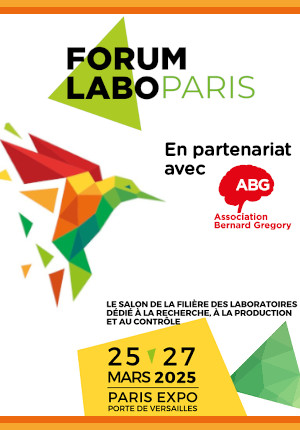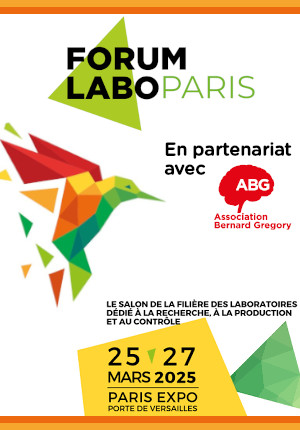Modélisation et observations de la formation dynamique de la région de transition entre la protubérance et la couronne solaire. // Modelling and observations investigation of the dynamic formation of the solar prominence-corona transition region
|
ABG-128775
ADUM-61643 |
Sujet de Thèse | |
| 20/02/2025 |
Université Paris-Saclay GS Physique
Orsay cedex - France
Modélisation et observations de la formation dynamique de la région de transition entre la protubérance et la couronne solaire. // Modelling and observations investigation of the dynamic formation of the solar prominence-corona transition region
- Physique
Protubérances solaires, spectroscopie et imagerie UV, Modélisation, turbulence, magnétohydrodynamique, Solar Orbiter
Solar prominences, UV spectroscopy and Imaging, Modelling, turbulence, magnetohydrodynamics, Solar Orbiter
Solar prominences, UV spectroscopy and Imaging, Modelling, turbulence, magnetohydrodynamics, Solar Orbiter
Description du sujet
Les protubérances solaires (Bocchialini et al, 2001, Chiuderi et al, 2001, Parenti 2014), structures de plasma dense et froid en suspension dans la couronne chaude et peu dense, sont entourées par une région de transition (PCTR, Prominence-Corona-Transition Region). Ces structures peuvent rester stables pendant de longues périodes et être soudainement éjectées dans le milieu interplanétaire.
C'est dans la PCTR que se produit une perte significative d'énergie thermique par rayonnement, ce qui fait de cette région un élément clé pour comprendre le chauffage et le refroidissement des protubérances.
Jusqu'à présent, la modélisation de la thermodynamique de la PCTR s'est principalement concentrée sur des systèmes statiques. Cependant, des avancées théoriques récentes (Hillier & Arregui 2019, Hillier, Snow & Arregui 2023) ont montré que la PCTR peut être générée par des mouvements dynamiques et turbulents, modifiant radicalement la thermodynamique et entraînant une augmentation des pertes radiatives dans cette région de plus d'un ordre de grandeur. Ces modèles théoriques doivent encore être comparés aux observations des protubérances.
Dans ce projet, l'étudiant.e sélectionné.e travaillera à la fois sur la modélisation de la formation dynamique de la PCTR et sur la comparaison de ces modèles avec des observations de pointe. Ces observations incluront notamment celles réalisées par Solar Orbiter (lancé en 2020), qui embarque, entre autres, un spectromètre UV pour le diagnostic du plasma ainsi qu'un imageur offrant une résolution spatiale et temporelle sans précédent. Ce travail permettra à l'étudiant.e de développer et d'améliorer les modèles de formation dynamique de la PCTR et d'identifier les signatures observationnelles permettant de quantifier son rôle dans l'évolution thermodynamique du système des protubérances.
------------------------------------------------------------------------------------------------------------------------------------------------------------------------
------------------------------------------------------------------------------------------------------------------------------------------------------------------------
Solar prominences (Bocchialini et al, 2001, Chiuderi et al, 2001, Parenti 2014), cool clouds of dense plasma suspended in the hot and tenuous solar corona, are surrounded by a transition region (PCTR, prominence corona transition region). These structures can stay during long periods, before to be suddenly ejected in the interplanetary medium.
The PCTR is where significant thermal energy is lost from the system via radiation. This makes the PCTR of key importance in understanding the heating and cooling of the prominence system. To date, the key modelling of the thermodynamics of the PCTR has focussed on static systems. However, recent theoretical developments (Hillier & Arregui 2019, Hillier, Snow & Arregui 2023) have shown that the PCTR can be created by dynamic, turbulent motions drastically changing the thermodynamics resulting in increases in the radiative losses of this region by more than an order of magnitude. These theoretical models are still to be compared with observed prominences. In this project, the chosen student will work on both the modelling of dynamical formation of the PCTR and the comparison of these models to cutting edge observations. These will include those using Solar Orbiter (launched in 2020) which carries, among others, an UV spectrometer for plasma diagnostics, and the unprecedent high temporal and spatial resolutions imager. This will allow the student to develop and improve the models of dynamically formed PCTR and search for the observational signatures that can be used to quantify their role in the thermodynamic evolution of the prominence system.
------------------------------------------------------------------------------------------------------------------------------------------------------------------------
------------------------------------------------------------------------------------------------------------------------------------------------------------------------
Début de la thèse : 01/10/2025
C'est dans la PCTR que se produit une perte significative d'énergie thermique par rayonnement, ce qui fait de cette région un élément clé pour comprendre le chauffage et le refroidissement des protubérances.
Jusqu'à présent, la modélisation de la thermodynamique de la PCTR s'est principalement concentrée sur des systèmes statiques. Cependant, des avancées théoriques récentes (Hillier & Arregui 2019, Hillier, Snow & Arregui 2023) ont montré que la PCTR peut être générée par des mouvements dynamiques et turbulents, modifiant radicalement la thermodynamique et entraînant une augmentation des pertes radiatives dans cette région de plus d'un ordre de grandeur. Ces modèles théoriques doivent encore être comparés aux observations des protubérances.
Dans ce projet, l'étudiant.e sélectionné.e travaillera à la fois sur la modélisation de la formation dynamique de la PCTR et sur la comparaison de ces modèles avec des observations de pointe. Ces observations incluront notamment celles réalisées par Solar Orbiter (lancé en 2020), qui embarque, entre autres, un spectromètre UV pour le diagnostic du plasma ainsi qu'un imageur offrant une résolution spatiale et temporelle sans précédent. Ce travail permettra à l'étudiant.e de développer et d'améliorer les modèles de formation dynamique de la PCTR et d'identifier les signatures observationnelles permettant de quantifier son rôle dans l'évolution thermodynamique du système des protubérances.
------------------------------------------------------------------------------------------------------------------------------------------------------------------------
------------------------------------------------------------------------------------------------------------------------------------------------------------------------
Solar prominences (Bocchialini et al, 2001, Chiuderi et al, 2001, Parenti 2014), cool clouds of dense plasma suspended in the hot and tenuous solar corona, are surrounded by a transition region (PCTR, prominence corona transition region). These structures can stay during long periods, before to be suddenly ejected in the interplanetary medium.
The PCTR is where significant thermal energy is lost from the system via radiation. This makes the PCTR of key importance in understanding the heating and cooling of the prominence system. To date, the key modelling of the thermodynamics of the PCTR has focussed on static systems. However, recent theoretical developments (Hillier & Arregui 2019, Hillier, Snow & Arregui 2023) have shown that the PCTR can be created by dynamic, turbulent motions drastically changing the thermodynamics resulting in increases in the radiative losses of this region by more than an order of magnitude. These theoretical models are still to be compared with observed prominences. In this project, the chosen student will work on both the modelling of dynamical formation of the PCTR and the comparison of these models to cutting edge observations. These will include those using Solar Orbiter (launched in 2020) which carries, among others, an UV spectrometer for plasma diagnostics, and the unprecedent high temporal and spatial resolutions imager. This will allow the student to develop and improve the models of dynamically formed PCTR and search for the observational signatures that can be used to quantify their role in the thermodynamic evolution of the prominence system.
------------------------------------------------------------------------------------------------------------------------------------------------------------------------
------------------------------------------------------------------------------------------------------------------------------------------------------------------------
Début de la thèse : 01/10/2025
Nature du financement
Précisions sur le financement
Programme UPSaclay-Exeter (ADI)
Présentation établissement et labo d'accueil
Université Paris-Saclay GS Physique
Etablissement délivrant le doctorat
Université Paris-Saclay GS Physique
Ecole doctorale
572 Ondes et Matière
Profil du candidat
Le/la candidat.e doit avoir un Master de physique.
Connaissances en physique des plasmas appréciées, mais pas nécessaires.
Notions de traitement du signal. Notions de programmation Python et IDL. Une bonne connaissance est un plus.
Master in physics. Knowledge in plasma physics is a plus, but not required. Signal processing basics. Python and IDL programming basic. Advanced level a plus.
Master in physics. Knowledge in plasma physics is a plus, but not required. Signal processing basics. Python and IDL programming basic. Advanced level a plus.
31/03/2025
Postuler
Fermer
Vous avez déjà un compte ?
Nouvel utilisateur ?
Besoin d'informations sur l'ABG ?
Vous souhaitez recevoir nos infolettres ?
Découvrez nos adhérents
 CESI
CESI  SUEZ
SUEZ  Aérocentre, Pôle d'excellence régional
Aérocentre, Pôle d'excellence régional  Nokia Bell Labs France
Nokia Bell Labs France  ANRT
ANRT  Ifremer
Ifremer  CASDEN
CASDEN  Groupe AFNOR - Association française de normalisation
Groupe AFNOR - Association française de normalisation  Tecknowmetrix
Tecknowmetrix  ADEME
ADEME  PhDOOC
PhDOOC  MabDesign
MabDesign  Laboratoire National de Métrologie et d'Essais - LNE
Laboratoire National de Métrologie et d'Essais - LNE  Généthon
Généthon  ONERA - The French Aerospace Lab
ONERA - The French Aerospace Lab  MabDesign
MabDesign  Institut Sup'biotech de Paris
Institut Sup'biotech de Paris  TotalEnergies
TotalEnergies  Institut de Radioprotection et de Sureté Nucléaire - IRSN - Siège
Institut de Radioprotection et de Sureté Nucléaire - IRSN - Siège











